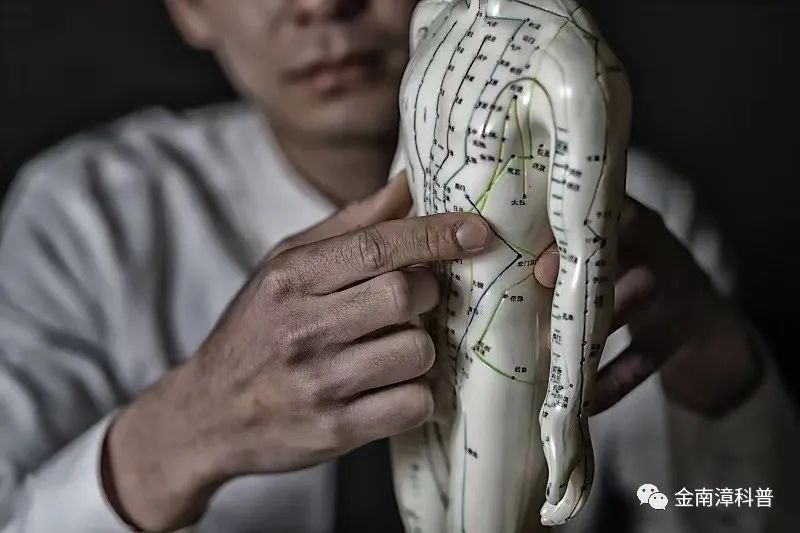Source: National Committee for the Approval of Scientific and Technological Terms
望诊 (Wang Zhen)
Inspection Diagnosis
Definition: A diagnostic method that uses visual observation of the patient’s spirit, color, shape, state, tongue appearance, excretions, and children’s fingerprints to understand the condition of the illness.
Discipline: Traditional Chinese Medicine (TCM) _ Diagnosis _ Diagnostic Methods
Related Terms: 四诊合参 (Four Diagnostic Methods), 正气 (Zheng Qi), 五色 (Five Colors)

Image Source: Visual China
【Extended Reading】
Vision plays an important role in people’s observation and understanding of objective things. Observing the human body through vision to determine the health and disease level is a fundamental skill that doctors should master. Only Traditional Chinese Medicine (TCM) has summarized and systematized this skill into a distinctive diagnostic method. TCM has four major diagnostic methods, namely “望 (Wang) – Inspection, 闻 (Wen) – Auscultation, 问 (Wen) – Inquiry, and 切 (Qie) – Palpation,” among which inspection diagnosis is the primary one, referred to as “knowing through observation.”
TCM emphasizes inspection diagnosis because it views the human body as an organic whole, where local lesions can affect the entire body, and internal organ changes can be reflected in various aspects of the face and limbs, known as “what is within must manifest externally.” As early as in the Huangdi Neijing (Yellow Emperor’s Inner Canon) – Ling Shu – Ben Cang Pian, it was stated: “Observe the external manifestations to understand the internal organs, thus knowing the illness.” This is a specific application of TCM’s holistic view in diagnosis.
The entirety of inspection diagnosis can be summarized as observing the spirit, color, shape, and state of the human body, both overall and locally. When a doctor interacts with a patient, they need to quickly observe the patient’s gaze, facial expressions, speech, behavior, and responses within a short time to establish a preliminary judgment of the patient’s condition.
TCM emphasizes the observation of spirit. The term “spirit” refers to both the external manifestations of the body’s life activities and the mental activities of a person. “Form and spirit are unified” and “form and spirit coexist” are important indicators of human health. The spirit is prominently expressed in a person’s gaze, so observing the spirit begins with the eyes. There are four levels of spirit observation: “得神 (De Shen) – Spirit Present, 少神 (Shao Shen) – Spirit Deficient, 失神 (Shi Shen) – Spirit Lost, 假神 (Jia Shen) – False Spirit.” Spirit Present indicates abundant essence and qi; Spirit Deficient indicates insufficient Zheng Qi; Spirit Lost indicates severe loss of essence and qi; False Spirit refers to a temporary improvement in the spirit of a critically ill patient, also known as “return of light.”
In TCM, observing color emphasizes looking at the complexion. The human skin has five colors: 青 (Qing) – Green, 赤 (Chi) – Red, 黄 (Huang) – Yellow, 白 (Bai) – White, 黑 (Hei) – Black, with the face being the most obvious area, as it reflects the essence of the heart, and the essence of other organs is also conveyed through the meridians to the face. Complexion can be categorized into normal and pathological colors. Normal color refers to the complexion of a healthy person, which is subtly red and yellow, bright and moist, and can change according to the seasons, day and night, weather, and region. Pathological colors can be divided into five types: 青色 (Qing) indicates cold syndrome, pain syndrome, blood stasis, and convulsions; 赤色 (Chi) indicates heat syndrome, with bright red indicating excess heat and light red indicating deficiency heat; 黄色 (Huang) indicates deficiency syndrome and dampness syndrome; 白色 (Bai) indicates deficiency syndrome, cold syndrome, blood loss, and qi depletion; 黑色 (Hei) indicates kidney deficiency, cold syndrome, pain syndrome, and blood stasis. The five-color diagnostic method is one of the distinctive diagnostic methods of TCM and a summary of medical practice.
Observing shape and state involves examining the patient’s physique and posture. TCM believes that the strength or weakness, fat or thinness of the body is unified with the internal organs’ solidity or deficiency. The dynamic and static postures of the body are also related to the fluctuations of yin, yang, qi, and blood. This viewpoint provides a theoretical basis for later theories of constitution.
Local inspection diagnosis also includes observing the head and neck, facial features, tongue appearance, skin, children’s meridians, excretions, and secretions, all of which have unique systematic summaries in TCM. Among these, tongue diagnosis and observing children’s meridians form their own systems. Tongue diagnosis is another important diagnostic method that developed after pulse diagnosis in TCM; observing children’s meridians can diagnose the condition of children under three years old by examining changes in the index finger meridians. These two diagnostic methods have improved the diagnostic system of TCM.
Inspection diagnosis is one of the distinctive diagnostic methods of TCM, and to achieve more accurate diagnosis, TCM emphasizes the integration of the four diagnostic methods.

